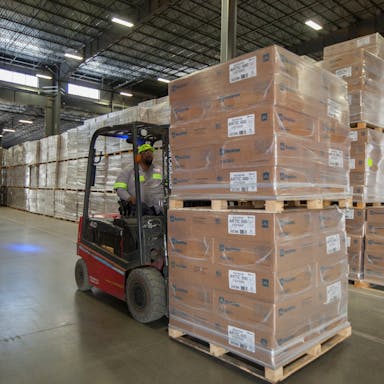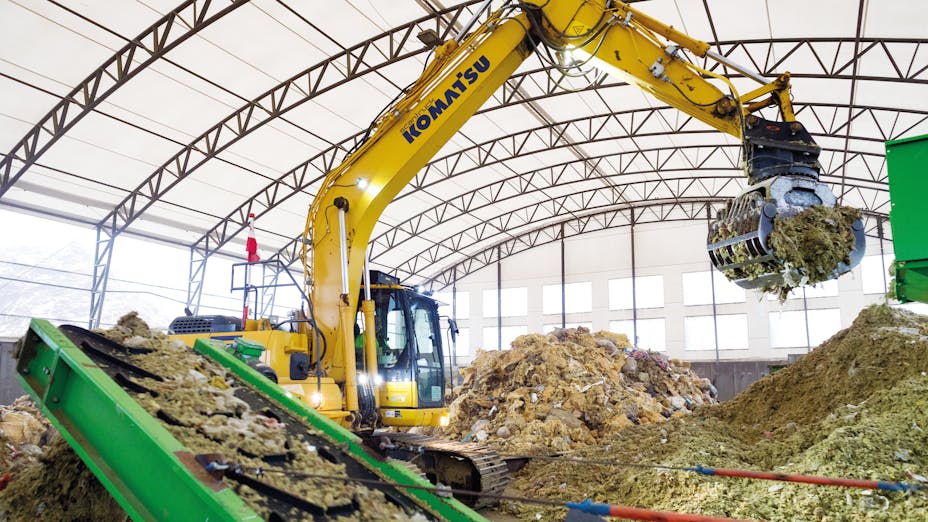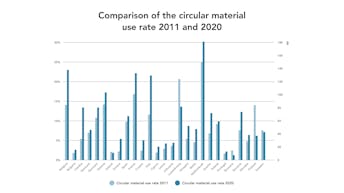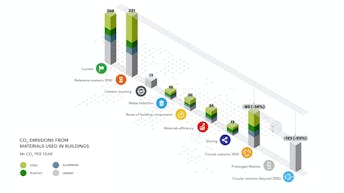Recycling, Upcycling, and Downcycling
As it accounts for around 36% of all waste generated in the EU [10], construction and demolition waste are identified as a priority area in which recycling is a crucial issue. The construction and demolition sectors are also challenged to improve the quality of their products.
However, we normally use the term "recycling" very broadly; we use the term to indicate any activity that involves the recovery and reuse of raw materials that would otherwise be sent to landfill. But recycling can actually be an extraordinarily complex process, and the difference between upcycling and downcycling is monumental.
The construction industry is notoriously fragmented. Additionally, due to poor design and lack of information about a building’s material composition, opportunities to facilitate material reuse and recycling are missed. If each component had a digital “passport” that clearly defined its material composition alongside possible reuse options, materials would be far less likely to be wasted. In Amsterdam, improving the reuse of materials in the construction of 70,000 new apartments before 2040 could reduce waste by half a million tonnes. [11]
Reuse keeps the materials at their highest possible value, considering invested time, money, energy, and creativity. However, reuse is not possible for all materials, making recycling infrastructure crucial. Moreover, using recycled instead of virgin materials reduces CO2 emissions by 40–70% [8].
In order to develop the market for secondary materials, buildings need to be designed with recyclable, recycled, and reused raw materials. Furthermore, in order to enable these activities, recycling and reusing infrastructure must be developed, as well as the quality of secondary materials.
Turn Waste into High-Quality Secondary Materials
In a circular construction system, waste that can be recycled or reused is returned to the economy. Secondary materials, which are recycled, can be exchanged, and shipped just like primary raw materials. However, due to waste regulation and transportation over borders, they only stand for just a small fraction of the materials used in the EU.
It is vitally important to increase the use of secondary raw materials in the construction industry and enable more efficient waste management with easier options for recycling and reuse towards a real adoption of circular practices in the construction industry.
At Rockfon, we use stone wool as our primary material. It is a fully closed-loop product and can be recycled repeatedly without any degradation in quality. ROCKWOOL factories recycle wool waste to create briquettes that we use in our manufacturing process. This reduces the amount of virgin stone needed. We also upcycle secondary materials from other industries. By that, new high-quality stone wool products are produced, with a high percentage of recycled content.
In fact, ROCKWOOL Group recycled roughly 163,000 tonnes of stone wool waste in 2020. And from 29% to 64% of our product composition is from recycled materials, depending on the product choice. We offer the possibility to our customers in many European markets to recycle old stone wool ceiling tiles or cut-offs from installation. We have established partnerships in many of the countries we operate, and we can support you with your request for recycling.
___
Sources:
- “Construction and Demolition Waste: Challenges and Opportunities in a Circular Economy.” 2020. n.d. Eionet Portal. 2020. https://www.eionet.europa.eu/etcs/etc-wmge/products/etc-reports/construction-and-demolition-waste-challenges-and-opportunities-in-a-circular-economy.
- “Construction and Demolition Waste: Challenges and Opportunities in a Circular Economy — European Environment Agency.” 2020. n.d. European Environment Agency. 2020. https://www.eea.europa.eu/publications/construction-and-demolition-waste-challenges.
- “EUR-Lex - 32008L0098 - EN - EUR-Lex.” 2018. Europa.eu. 2018. https://eur-lex.europa.eu/legal-content/EN/ALL/?uri=celex%3A32008L0098.
- “Recovery rate of construction and demolition waste” 2022. Europa.eu. 2022. https://ec.europa.eu/eurostat/databrowser/view/cei_wm040/default/table?lang=en.
- Bumanis, Girts, Aleksandrs Korjakins, and Diana Bajare. 2022. “Environmental Benefit of Alternative Binders in Construction Industry: Life Cycle Assessment.” Environments 9 (1): 6. https://doi.org/10.3390/environments9010006.
- “Global Material Resources Outlook to 2060: Economic Drivers and Environmental Consequences | READ Online.” n.d. Oecd-Ilibrary.org. Accessed January 29, 2022. https://read.oecd-ilibrary.org/environment/global-material-resources-outlook-to-2060_9789264307452-en#page17.
- “Decarbonisation of buildings: for climate, health and jobs.” n.d. The European Academies' Science Advisory Council. 2021. https://easac.eu/fileadmin/PDF_s/reports_statements/Decarb_of_Buildings/EASAC_Decarbonisation_of_Buildings_Web_publication030621.pdf.
- “Building a World Free from Waste and Pollution.” n.d. Ellen MacArthur Foundation. https://ellenmacarthurfoundation.org/articles/building-a-world-free-from-waste-and-pollution.
- Brunn, Michael. 2020. “Use of Steel Scrap Saves Billions in Climate and Environmental Costs.” RECYCLING Magazine. March 25, 2020. https://www.recycling-magazine.com/2020/03/25/use-of-steel-scrap-saves-billions-in-climate-and-environmental-costs/.
- “Recycling of Secondary Raw Materials for a Sustainable Optimization of Construction Processes in Civil Engineering.” n.d. Ec.europa.eu. Accessed January 29, 2022. https://ec.europa.eu/growth/sectors/raw-materials/eip/raw-materials-commitment/recycling-secondary-raw-materials-sustainable-optimization-construction-processes-civil-engineering_en.
- “Review of Completing the Picture: How the Circular Economy Tackles Climate Change.” 2019. Ellen MacArthur Foundation. https://circulareconomy.europa.eu/platform/sites/default/files/emf_completing_the_picture.pdf.







